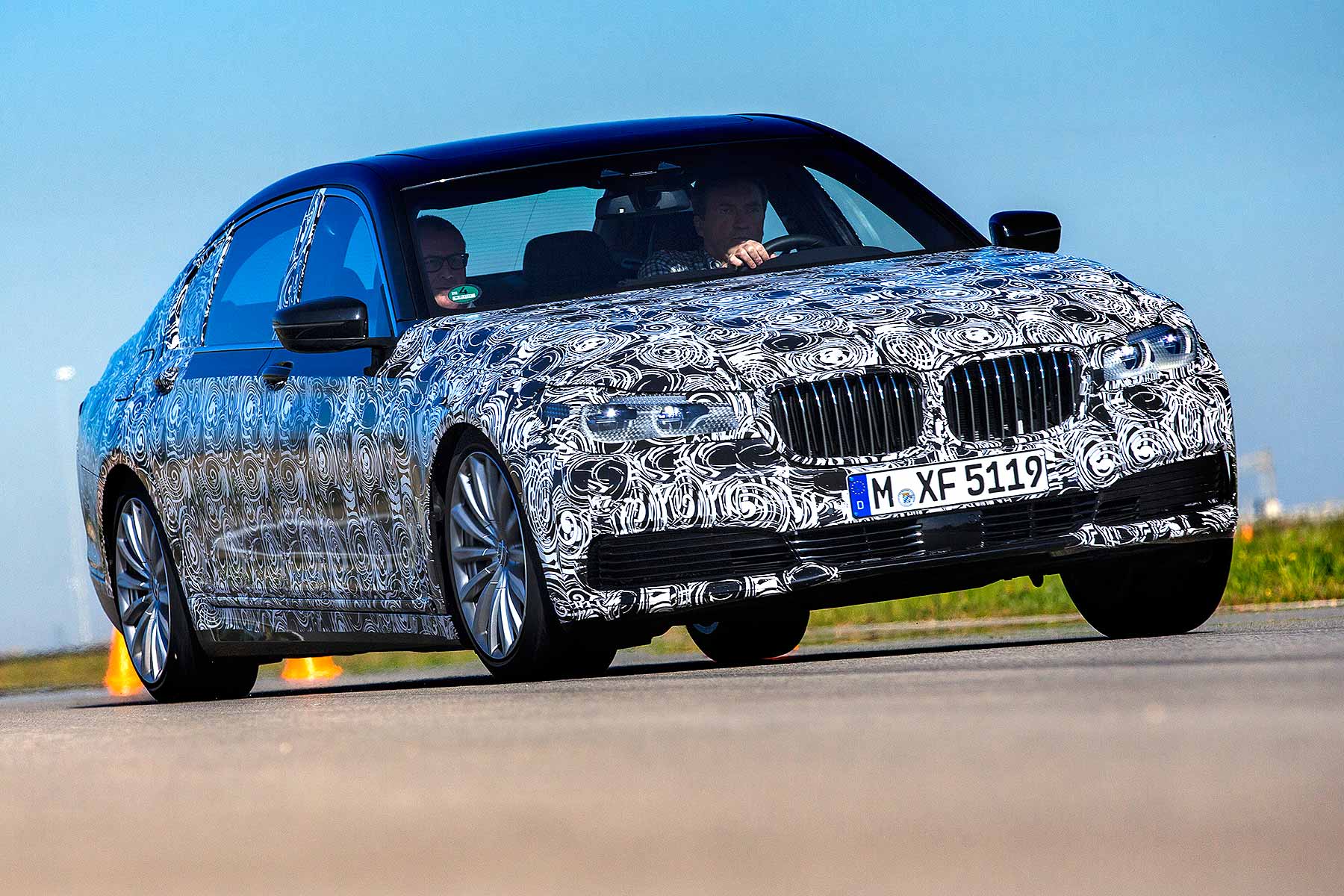 The 2015 BMW 7 Series won’t hit showrooms until autumn, but we’ve bagged an early drive in the prototype. Can it unseat the S-Class as the new limo king?
The 2015 BMW 7 Series won’t hit showrooms until autumn, but we’ve bagged an early drive in the prototype. Can it unseat the S-Class as the new limo king?
Tim Pitt | April 2015
We start by signing a non-disclosure agreement. Then our phones are seized and the cameras taped over. Only then can we enter BMW’s secret proving ground in southern France to drive the new 7 Series.
The cars are wrapped in camouflage and their dashboards are draped in unflattering grey foam. But in terms of chassis set-up and technology, these are pretty much production-ready.
First, though, a bit of background. This is the sixth-generation Seven, the first being the E23 of 1977. The 2001 E65 version is especially significant for being the car that introduced iDrive. BMW’s ‘infotainment’ system was groundbreaking then, and remains the industry standard now.
The new 7 Series will be officially unveiled at the 2015 Frankfurt Motor Show in September. There’s no word on prices or performance figures yet – or indeed the rumoured plug-in hybrid version – but all models should be markedly more efficient.
As with its electric/hybrid i3 and i8, BMW has used a high-tech mix of steel, aluminium and carbon-fibre-reinforced plastic (CFRP) to cut weight by 130kg versus the outgoing car. That’s equivalent to removing two teenagers from the back seat.
Importantly, they’ve also lowered the centre of gravity, which benefits steering response and handling. To the test track, then…
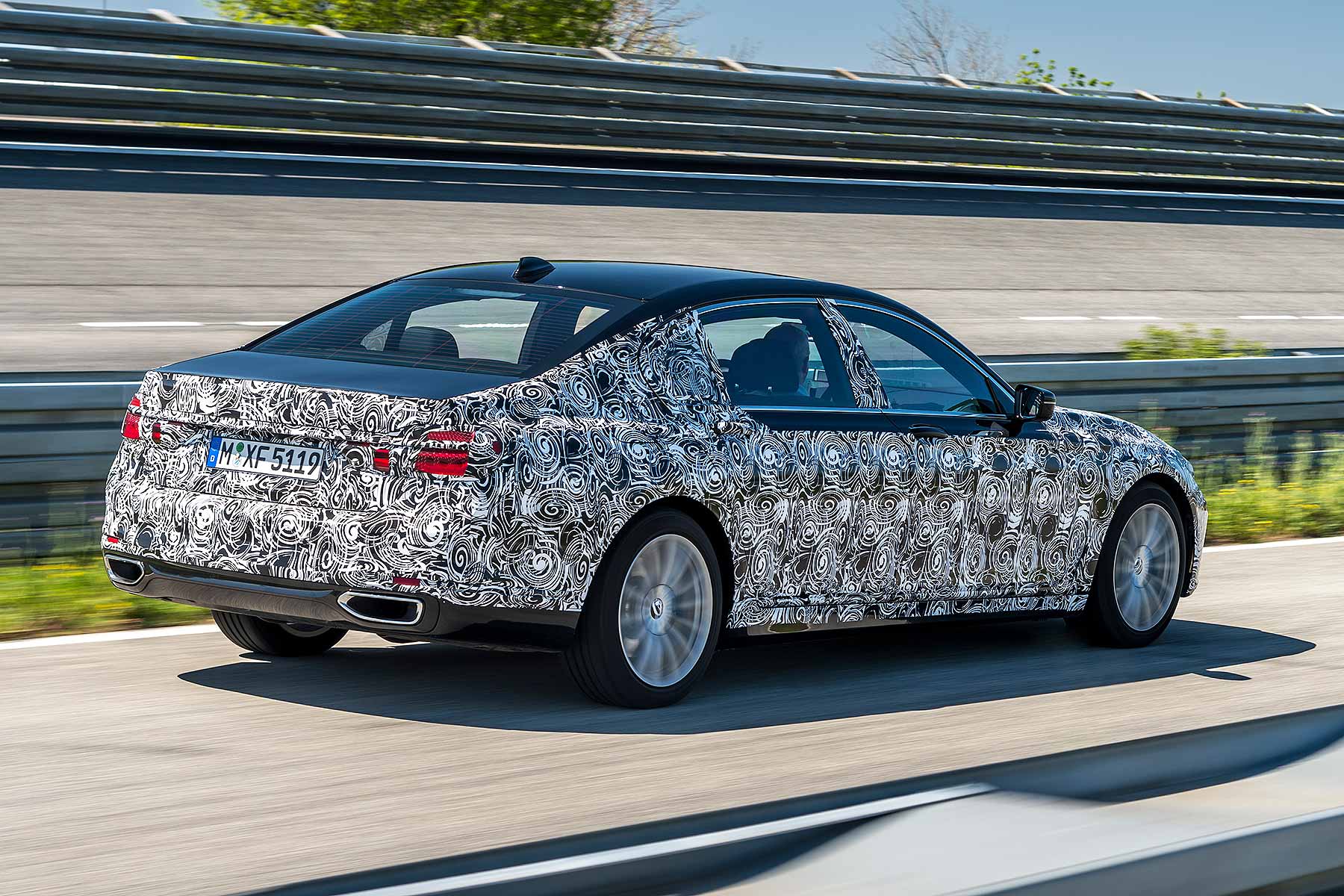
What is the 2015 BMW 7 Series like to drive?
The car we’re driving is a long-wheelbase 740Li. Its straight-six won’t be that popular in the UK, where the 730d diesel is the volume seller. However, there’s something rather special about a large-capacity petrol engine and, as we venture onto the high-speed loop, the big BMW doesn’t disappoint.
Floor the throttle and the car surges forward in a spirited yet utterly civilised manner, its eight-speed automatic gearbox swapping cogs almost imperceptibly. There’s a subtle snarl under acceleration, but at motorway cruising speed the engine is all but inaudible.
We move on to the handling circuit. All 7 Series come with front and rear air suspension, plus dynamic dampers. Our car also boasted optional Dynamic Drive anti-roll control, which keeps the body flat when cornering.
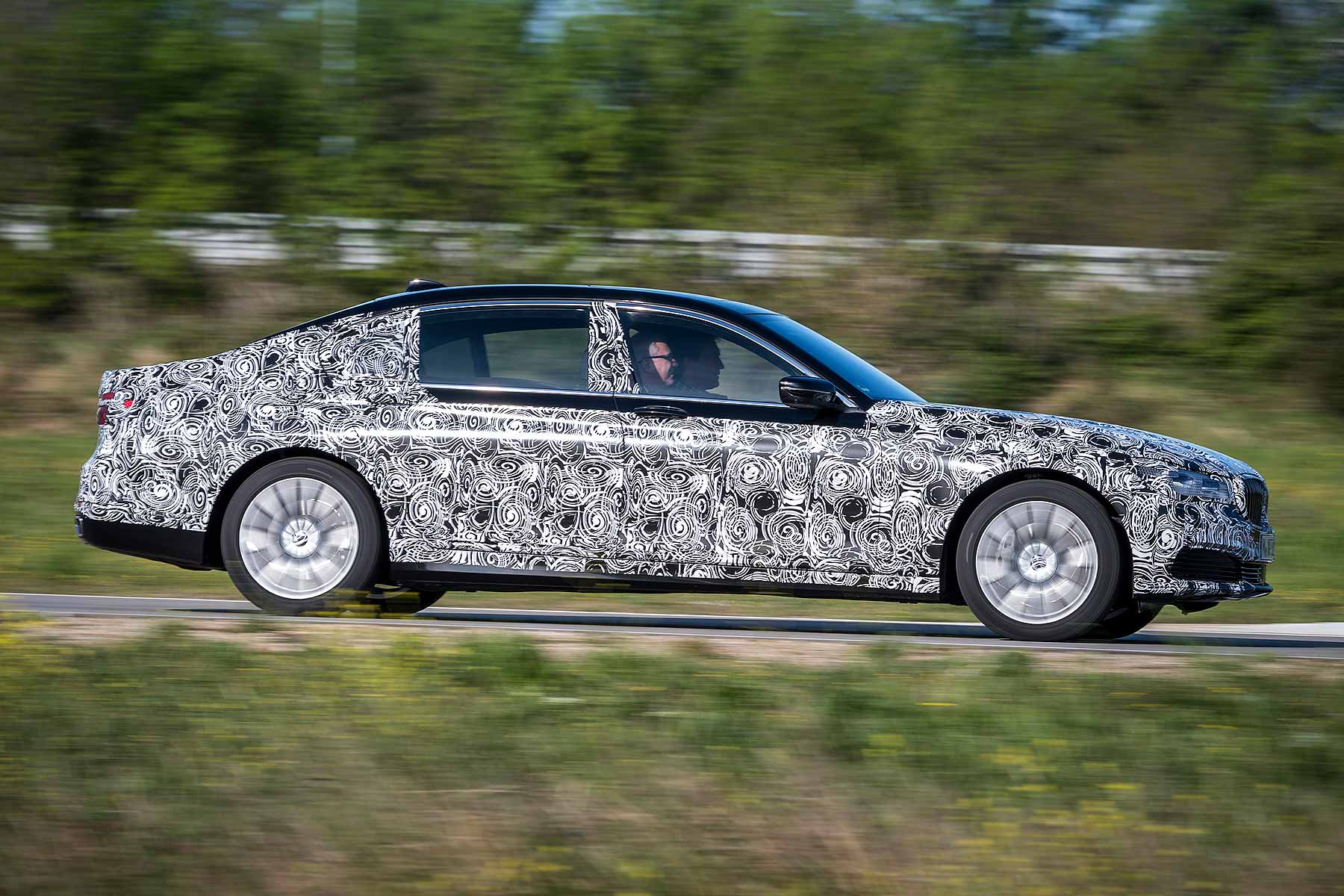
And my, is it effective. For a long-wheelbase limo, the Seven changes direction with fleet-footed agility – and just a hint of rear-wheel-drive attitude. It’s remarkably easy to drive at speed, too There is none of the lurching and wallowing sometimes experienced in cars of this size.
The driver can toggle between Comfort Plus, Comfort and Sport settings for the suspension. But new for the 2015 7 Series is Adaptive mode, which analyses your driving style and uses GPS data about where you are to determine the optimum setting.
There are a host of other driver assistance systems as well. Radar-based active cruise control maintains a set distance from the car in front or can observe signposted speed limits. And Lane Departure Warning Assistant keeps you firmly between the white lines and prevents you swerving into a car in your blind spot.
Doubtless the most headline-grabbing driver aid, however, is one that doesn’t actually require any driving. BMW’s world-first remote control parking allows you to manoeuvre into a tight space from outside the car, using buttons on the key fob. Perfect if you have a tight-fitting garage.
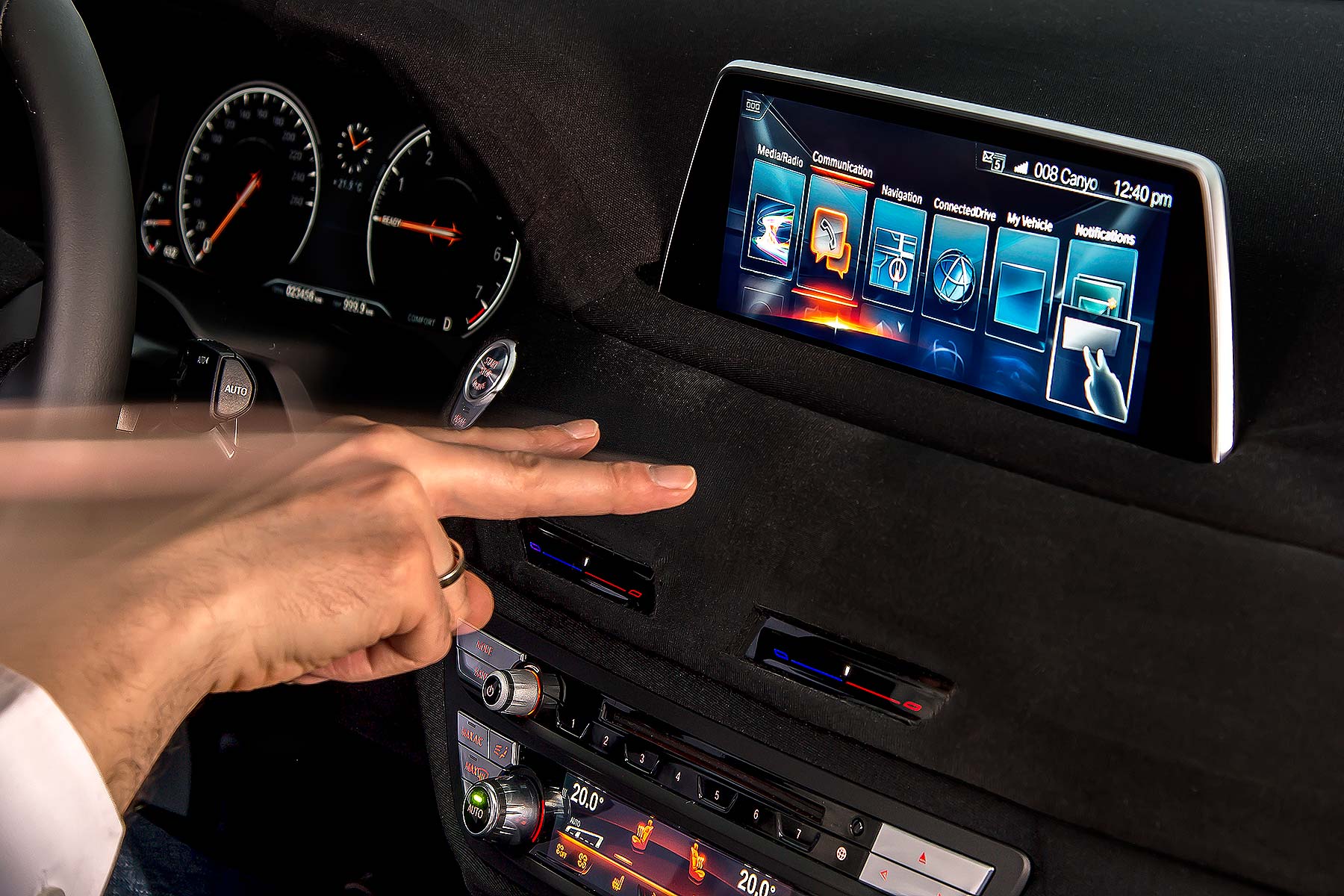
What clever tech does the BMW 7 Series have?
Psychedelic disguise notwithstanding, it’s clear BMW has played it safe with the exterior of the 7 Series. Considering some of its radical recent designs (not least the wonderful i8), we think that’s a shame.
Fortunately, the interior is rather more interesting. Or, at least, what we could see of it is…
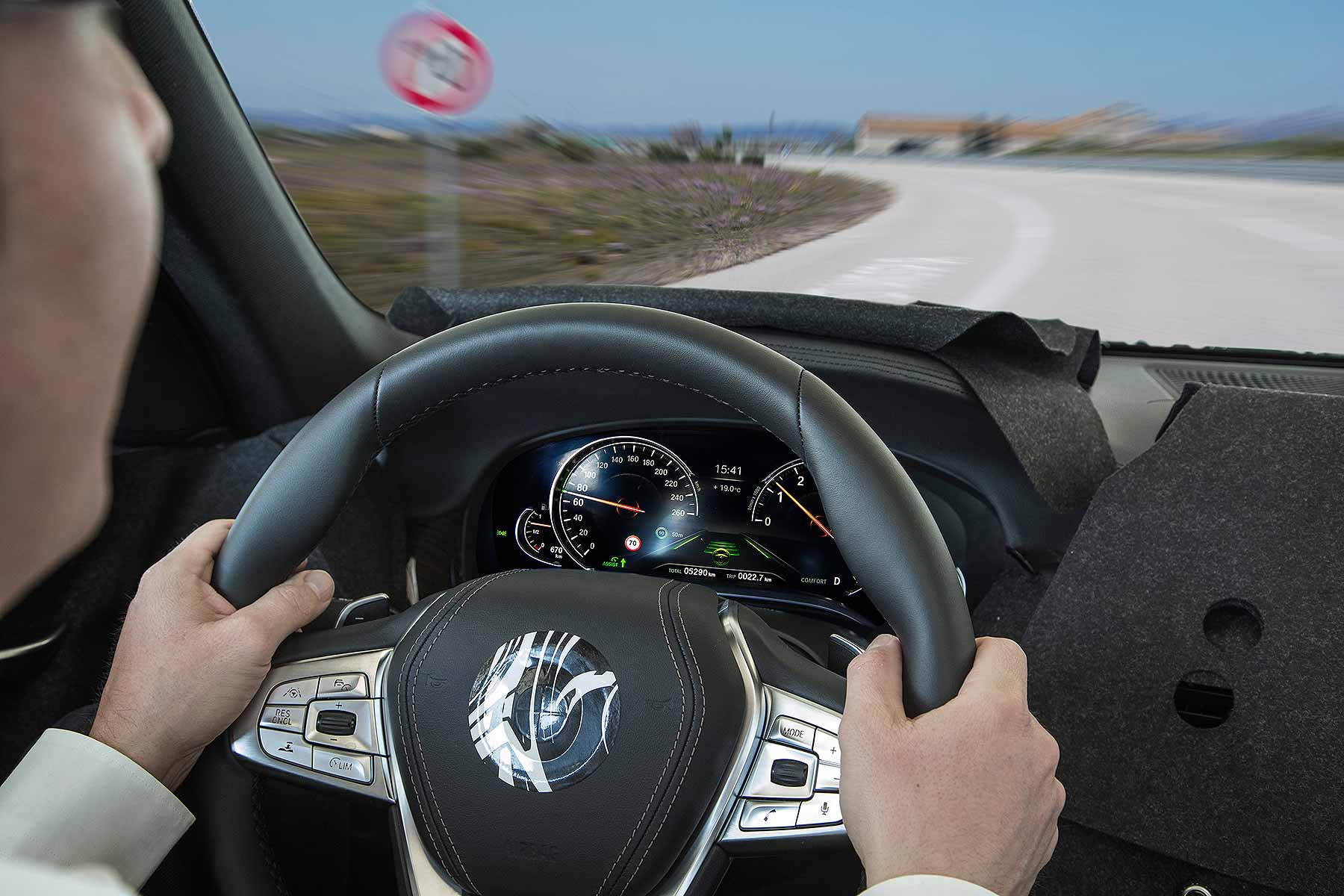
In common with many upmarket cars, the 7 Series has adopted a TFT electronic display in front of the driver. Thankfully, though, the dials remain models of trad-BMW white-on-black clarity. Switch the engine to fuel-sipping Eco Pro mode and the rev counter is replaced by a hybrid-style power gauge.
The air vents now have touch-sensitive sliders to adjust temperature for driver and passenger and there’s a small touchscreen in front of the gearlever for controlling airflow, seat heating and – we kid you not – in-car perfuming.
The big news, however, is the latest iteration of iDrive, which now offers a touchscreen, along with voice and gesture control. That doesn’t mean the familiar iDrive controller on the centre console has disappeared. But you can now access all the same commands via the touchscreen, which you swipe and pinch-to-zoom like an iPad.
We also tried the gesture control. This uses a camera in the roof to recognise hand signals, meaning you don’t need to take your eyes off the road. For example, twirling your finger adjusts the audio volume, prodding the dash instructs the sat nav to navigate home and a dismissive wave allows you to reject incoming calls.
It takes some practice and, in truth, isn’t vastly easier than pressing an old-fashioned button, but we can’t fault BMW’s efforts to make technology more accessible.

Verdict: BMW 7 Series (2015)
It’s too early to tell whether the new 7 Series can topple the S-class –frequently referred to as ‘the best car in the world’ – from its lofty pedestal.
However, there’s no doubt BMW has upped its game on in terms of technology, and delivered a car that will satisfy keen drivers. We can’t wait to try the finished article this autumn.
Rivals: BMW 7 Series (2015)
- Mercedes-Benz S-Class
- Jaguar XJ
- Audi A8
- Maserati Quattroporte
- Lexus LS
The Mercedes-Benz is our pick of this exclusive bunch. A beautiful cabin, advanced safety technology and (relatively) efficient engines are its strong suits. The Jaguar XJ is less well-rounded, but arguably more characterful. And the Audi A8, while very capable, is starting to show its age.
Our two wild cards are the flawed-but-alluring Maserati Quattroporte and the Lexus LS 600h hybrid, which is refined but very expensive.